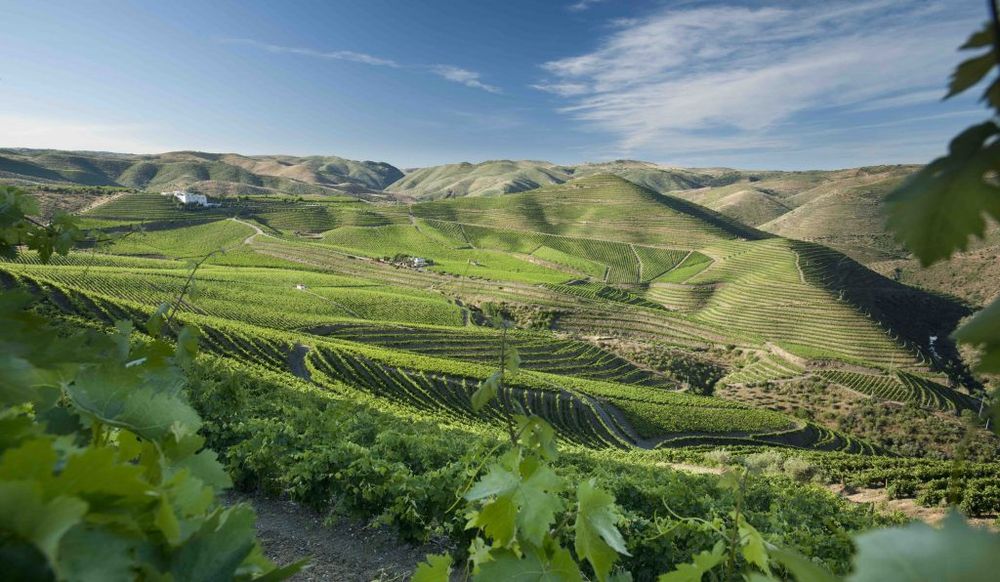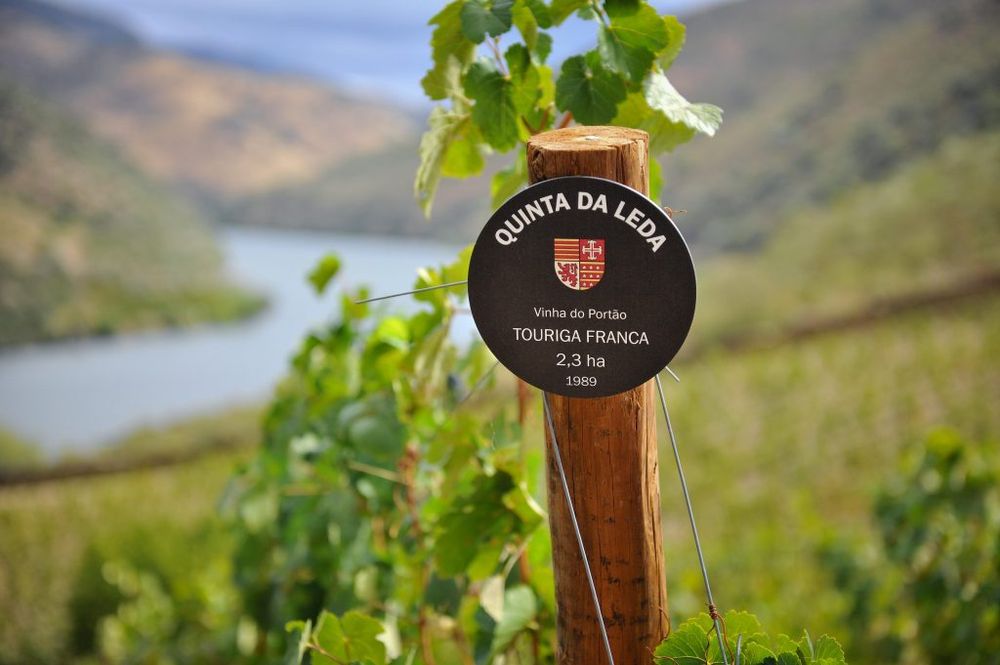Tasting a vertical of Quinta da Leda 1997-2014 teaches us many things about still red Portuguese table wine.
Vertical tasting is instructive: it acquaints us at once with past, present and future of a wine. Tasting Casa Ferreirinha’s Quinta da Leda from the years 1997, 2001, 2004, 2007, 2011, 2013 and the yet to be released 2014 proved a number of points:

The Upper Douro is an exceptional provenance for still, red unfortified wines
Quinta da Leda was first planted in 1979 and is one of the quintas, or farms, where wines for the Barca Velha, Portugal’s most iconic still red wine, are sourced.
“A lot of people asked us why we don’t sell Barca Velha sooner, but we did not want to change the philosophy,” explains winemaker Luis Sottomayor. “So we decided to do something similar that could be approached a little earlier and we made the first Quinta da Leda in 1997.”
Just like Barca Velha, which also contains grapes from a much higher altitude, Quinta da Leda is not made every year – there are no Quinta da Leda wines in 1998, 2002 and 2006.
Touriga Franca is an exceptional grape
Usually all talk in the Douro is about Touriga Nacional. However, most of the Quinta da Leda wines have a sizeable, sometimes even majority component of this elegant grape which brings both firmness and freshness.
Sottomayor’s cheeky answer on why there is so much Touriga Franca in Quinta da Leda is simple: “Because I like it!” he smirks, but then quickly adds: “Touriga Franca gives more complexity and provides the wines’ structure; Touriga Nacional and Tinta Cão are more like salt and pepper.”
Luis Sottomayor and Sogrape are invested in serious, long-term clonal research into indigenous Douro varieties and have done a lot to preserve original genetic material.
So he is serious and right about Touriga Franca.
Qualitative fine-tuning is a global phenomenon
Whoever has been lucky enough to travel to the striking Douro Valley knows how remote it is, how traditional its rhythms and rites seem.
Yet the progression from the now mature 1997 vintage (all leather, crushed autumnal oak leaves and big but resolved tannins) to the as of yet opaque 2013 and 2014 vintages (which still brim with the luscious, savoury and brooding fruit so characteristic of the Douro) shows a distinct move towards using less new oak and more finely-tuned elegance.
These wines, by their very nature, are big and full-fruited, but they are also of exquisite balance and elegance – they have proper acidity. Stone, pebble, tar and slight smoke are at least as pervasive as fruit in the latter vintages.

Great sites perform no matter what
Each of the chosen vintages has a story to tell – “Conta-me uma história..” or ‘tell me a story’ was one of the themes of the tasting:
- 1997 was the first vintage with just 7000 bottles produced
- 2001 was the first vintage made in the new modern winery
- 2004 marked the coming of age of the newly planted vines
- 2007 was Sottomayor’s first full vintage at the Quinta
- 2011 represented a celebrated, widely declared vintage
- 2013 is the current release.
All these years were very different and while the expressions change, there is the thread of consistency. Tracing both similarities and differences is the joy of changing vintages.
Clarets and Cabernets are not the only wines to lay down
It of course depends if you like mature and evolved aromas in wine: if you do, you must make sure you lay down some Quinta da Leda.
The flavours of development and evolution have something metaphysical about them that goes well beyond the polymerisation of tannins: they tell the story of change and transformation, of graceful permutation and a revelation of a true core. Quinta da Leda has that in spades. Those who appreciate mature claret will find deep joy in these Douro wines.































